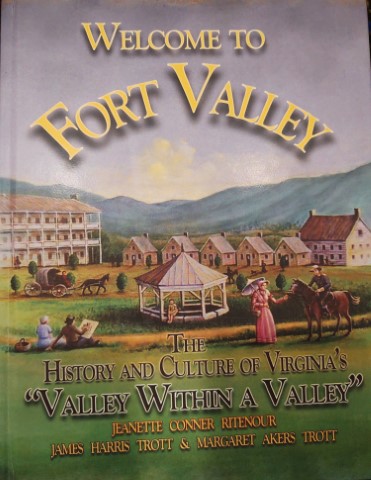Last year I was privileged to acquire another book of local history entitled, Welcome To Fort Valley by Jeanette Ritenour, James Trott, and Margaret Trott. This 600 page volume is chocked full of anecdotes, photos, and background of the Valley Within a Valley. Although I’ve just started reading it, what I’ve already found is enough for me to encourage you to read it too.
Early in this book is the story of William Powell for whom Powell’s Fort is named. I have heard variations of this tale all my life so it was fascinating to read this local lore. This somewhat shady character apparently arrived in Fort Valley in the early 1700s and either discovered and operated a silver mine or stashed some silver in an undisclosed location, or both.
Powell reportedly also minted his own counterfeit money from this silver and Mr. E. E. Keister, founder of the Shenandoah Publishing House, indicated that he had seen some of these coins as well as some ore and tools from Powell’s enterprise.
In another account, three boys supposedly found the mine by accident. Inside they claimed to have discovered an old wheelbarrow, pick, and shovel along with some silvery ore. When they approached the landowner about splitting profits from a potential treasure, he declined in no uncertain terms. His rude refusal angered the boys who returned to cover the entrance and swear secrecy regarding its whereabouts.
No known coins exist today and despite numerous attempts to locate the mine and the treasure, nothing has ever been found. It seems unlikely that young boys would either fill in the hole or keep the secret. Nevertheless, their tale is intriguing.
Such stories excite the minds of treasure hunters and youths alike and motivate many hikes and explorations. Although we’d like to believe they’re true, the lack of evidence certainly points to the opposite conclusion. When virtually all the land in the area was stripped repeatedly for lumber, bark and charcoal, it seems unlikely that any such mine would have been missed.
Treasure hunting captures our imaginations and this is exploited by various television shows and novels. The National Treasure movies were very popular and Oak Island, The Copper Scroll, Forrest Fen and others continue to entice searchers.
Apparently this fascination is nothing new. Jesus said in Matthew 13:44, “The kingdom of heaven is like treasure hidden in a field. When a man found it, he hid it again, and then in his joy went and sold all he had and bought that field.” Perhaps this strategy might have been more successful than splitting profits.
Either way, Jesus’ short parable helps us to understand how much we should value the kingdom of heaven and all things pertaining thereto. Too often we fail to properly assess the great eternal worth of spiritual matters. We get so caught up with growing crops or trees on the surface of life that we fail to mine what awaits us beneath.
God’s Word is certainly one of those treasures that helps us find heaven’s kingdom. It is a map that lays out unmistakable clues to discover the greatest treasures of all. A relationship with God through His Son Jesus yields not only an everlasting inheritance in His glorious heaven, but also provides our daily needs as well. It’s sad that we often get so enthralled with finding financial treasure that we miss the most valuable prize of Jesus Himself. It’s also unfortunate that we sometimes hoard these riches and refuse to share with others.
If you are ever hiking in the Fort and happen to stumble across Powell’s silver, please be sure to split it with me. In the meantime, a much more profitable use of energy is to search God’s Word and His heart and cherish Him above all earthly wealth.
Blessings, George
